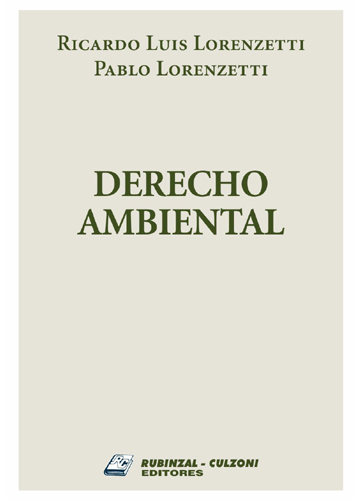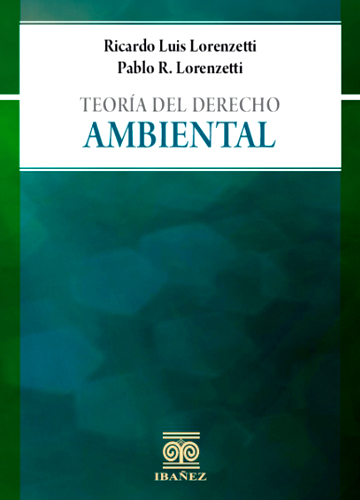
Derecho ambiental
Rubinzal Culzoni (Argentina)
First Part – The state of Enivronmental Law. The environmental paradigm. Utopic and analytical phase. Nature as a scarce resource. Second Part – Environmental Law. Legally protected goods. The legally protected environmental good. The environment and the actions/claims. Nature as a subject. Principles and directives. Principles of prevention and precaution. Legal qualification. Application of the principle. The balance between risks and benefits. Paradigmatic changes. The environmental function. Water and landscape regulations. The case of the Atuel River. Brasilia Declaration by Judges on Water Justice (The ten principles Declaration). The landscape: a challenge in the legal theory of Environmental Law. Third part – Environmental law and its application. The volunteer application. The civil responsibility system on environmental damage. The sentence. Collective sentence’s characteristics. Atypical rulings. The constitutional problem. Annex: relevant rulings in Comparative Law.

Principios e instituciones de derecho ambiental
La Ley (España)
The environmental paradigm acts like an organized principle of rhetorical thought, both analytical and protective, which is linked to the systematic interaction and the holistic approaches. Under these premises, a coordination in the functioning of the economic, social and natural systems is sought, as well as the communication between the principles of Private and Public law.
All in all, the objective is to tackle the conflicts that usually emerge in the social sphere, which contemplates public goods and the acts made by the individual situated in the collective action. In these cases, the subjective rights are interpreted in such a way that they don’t conspire against the integrity of such goods. The relationship between the right to property and environment must recognize an environmental function, due to the multiplicity of individual rights that must be coordinated and oriented towards the preservation of the collective good.
The environmental paradigm conceives nature as a collective good, scarce or in danger and keen to limit individual rights.
Under this scope, a modification in the notion of State of law is produced. The State of Environmental law incorporates the collective variable and the guardianship of common goods as the core issue of public policies.
In addition, judicial instruments are also revised and institutes are “environmentalized” such as the goods’ theory, civil responsibility, the processes and so on and so forth. The intention is to synchronize the legal systems with the rules of nature in order to achieve a better implementation of environmental law.
.

Teoría del derecho ambiental
Grupo Editorial Ibañez (Colombia)
The scarcity and the natural order’s weakness, in contrast to the human demands, provoke a new scenario of conflicts and a change of paradigm, which impacts on every single discipline, making the systemic approach prevail.
We examined the elements of this environmental paradigm and the shifts it has been producing.
In constitutional law, we studied the Environmental state’s characteristics and how those traditional principles could be expanded to achieve a better protection and coordination in the functioning of the economic, social and natural systems. We presented the new characteristics of the individual, homogenous and collective rights, linked to environmental actions/claims.
We studied the principles of environmental law, its structure and application, focusing in the most complex and controversial ones.
Nowadays’ key issue doesn’t reside in legislation but in the application of law and its effectiveness. That is why we dedicated an important part to procedural aspects and the new modalities of environmental rulings.
With the objective of evidencing that this subject is an issue in the whole world’s jurisprudence, we elaborated an annex with several countries’ rulings.
